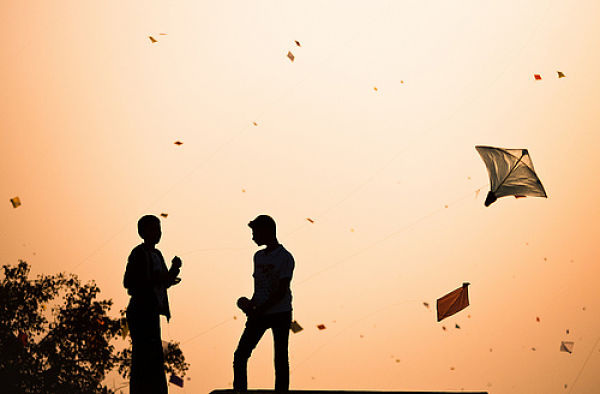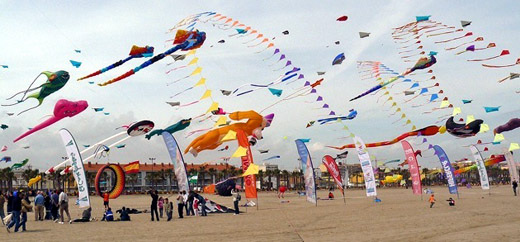In order for a kite fight to occur there must be at least two kites wheeled by two people for each kite. The kites must be in the air and once the two wires (tars as they call it) contact each other than the fight officially begins. The duration of a kite fight can last from two seconds up to an hour. The duration all depends on the wind, the wires, and the experience of the fighters. The main objective during a kite fight is release the wire and avoid pulling attempting to cut the opponents wire. There are a few theories on how to easily and quickly defeat opponents. The first theory is that if you quickly release the wire you would win, and the second theory is that the larger kite always wins. Both theories have been proven false though when put to use give fighters a greater advantage. With the art of kite fighting it ultimately comes down to experience, the wire terrain (smooth or rough), and if any of the methods are put to use.
The kites for the fights would not be amateur, the kites used for fights are high class and hand-crafted to win. The kites would be available in all shapes and sizes small ones ranging from 10-12 inches and the larger ones being up to the size of a human being. The kites were often made of thin paper and the skeleton of bamboo wood allowing for a better bend. The drum (charka as it is called) is used to hold the wire though during battle,and it could be used to quickly release wire for critical attacks. It is also important that the drum was light, therefore they were made of wood. Some people are passionate of the sport and think that the wire is the most important part of the kite. A variety of wires (tars) can be made out of multiple materials such as: hasht lumber, chel lumbar, panjsad and da lumber.
Relating back to the first paragraph it was mentioned that kite fighting became banned, but why? It is thought that the sport is too dangerous for children. The sharp wires have been known to cut into the hands of the fighters leaving them with scars. There have also been cases where children have falling off roves and becoming fatally injured with there intent of achieving a greater elevation for their fight. From 1996-2001 the Taliban government ruled kite fighting as un-Islamic and therefore banned the popular past-time. Preceding the war, the sport has been unbanned bringing back the way of life for many Afghan people.
Do you feel that the Taliban had good reason for banning kite fighting and that the sport should still be banned, if so explain, and if not explain? How would you feel if your favourite sport/hobby was banned by the government and how would you cope with it? Share your thoughts in the comments and make sure to vote in the poll.
If you're interesting in learning more about Afghan kite fighting then check out these awesome cites:
http://en.wikipedia.org/wiki/Fighter_kite - Top Button
http://www.afghana.com/Entertainment/Gudiparanbazi.htm - Lower Button


 RSS Feed
RSS Feed